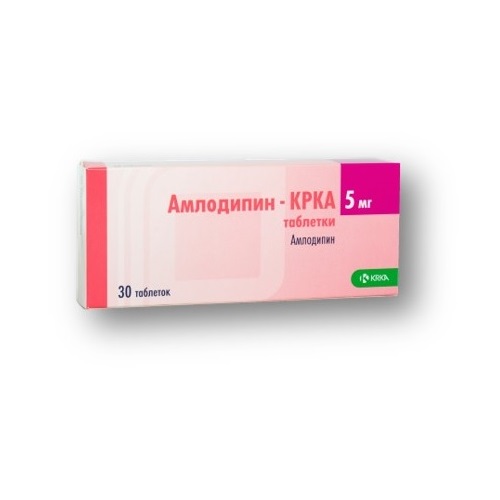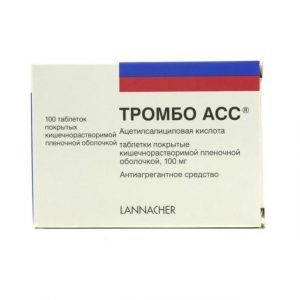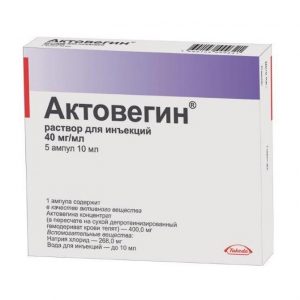Description
Pharmacological action
The derivative of dihydropyridine is a slow calcium channel blocker (BMKK), It has an antianginal and antihypertensive effect. By binding to dihydropyridine receptors, it blocks slow calcium channels, reduces the transmembrane transition of calcium ions to the cell (more to the smooth muscle cells of blood vessels than to cardiomyocytes).
Antianginal action is due to the expansion of the coronary and peripheral arteries and arterioles:
with angina pectoris reduces the severity of myocardial ischemia, dilates peripheral arterioles, reduces total peripheral vascular resistance (OPSS), reduces cardiac stress, reduces myocardial oxygen demand
expanding the coronary arteries and unchanged and ischemic zones of the myocardium, increases the flow of oxygen into the myocardium (especially with vasospastic angina pectoris), prevents spasm coronary arteries (including caused by smoking).
In patients with stable angina, a single daily dose increases exercise tolerance, slows the development of angina attacks and ischemic depression of the ST segment, reduces the frequency of angina attacks and the use of nitroglycerin and other nitrates.
Has a long dose-dependent antihypertensive effect. This effect is due to a direct vasodilating effect on the smooth muscles of blood vessels. In case of arterial hypertension, a single dose provides a clinically significant decrease in blood pressure (BP) over 24 hours (in the patient ² ¢s lying and standing position).
Orthostatic hypotension with amlodipine is rare. Amlodipine does not cause a decrease in exercise tolerance, left ventricular ejection fraction. Reduces the degree of left ventricular myocardial hypertrophy. It does not affect myocardial contractility and conductivity, does not cause a reflex increase in heart rate (HR), inhibits platelet aggregation, increases glomerular filtration rate (GFR), and has a weak natriuretic effect. With diabetic nephropathy does not increase the severity of microalbuminuria. It does not have any adverse effect on the metabolism and concentration of blood plasma lipids and can be used in the treatment of patients with bronchial asthma, diabetes mellitus and gout. A significant decrease in blood pressure is observed after 6-10 hours, the duration of the effect is 24 hours.
In patients with diseases of the cardiovascular system (including coronary atherosclerosis with damage to one vessel and up to stenosis of 3 or more arteries, atherosclerosis of the carotid arteries) after myocardial infarction, percutaneous transluminal coronary angioplasty (PTCA) or in patients with angina pectoris, the use of amlodipine prevents the development of thickening of the intima-media complex (CMM) of the carotid arteries, reduces mortality from myocardial infarction, stroke, CT , leads to a decrease in the number of hospitalizations for unstable angina and the progression of chronic heart failure (CKD), reduces the frequency of interventions aimed at restoring ix coronary blood flow.
Does not increase mortality or the development of complications and deaths in patients with CHF (NYHA class III-IV functional class) during treatment with digoxin, diuretics, and angiotensin converting enzyme inhibitors (ACEs). In patients with heart failure (III-IV functional class according to NYHA classification) of non-ischemic etiology, amlodipine is likely to cause pulmonary edema.
Indications
– Arterial hypertension (both in monotherapy and in combination with other antihypertensive drugs).
– Stable angina pectoris and vasospastic angina pectoris (Prinzmetal angina) (both in monotherapy and in combination with other antianginal drugs).
Contraindications
– Hypersensitivity to amlodipine, dihydropyridine derivatives and other components of the drug.
– Severe arterial hypotension (systolic blood pressure less than 90 mm Hg).
– Shock (including cardiogenic shock).
– Left ventricular outflow tract obstruction (e.g., severe aortic stenosis).
– Hemodynamically unstable heart failure after myocardial infarction.
– Age under 18 years of age (efficacy and safety have not been studied).
Precautions:
Impaired liver function, sinus node weakness syndrome (severe bradycardia, tachycardia), CHF of nonischemic etiology of the III-IV functional class according to NYHA classification, mild or moderate degree of arterial hypotension, aortic stenosis, mitral stenosis, hypertrophic obstructive cardiomyopathy (GOKMG1), acute myocardial infarction (and within 1 month after myocardial infarction), application in elderly patients, pregnancy and the period of breastfeeding (see section Use during pregnancy and during breastfeeding), simultaneous use with isoenzyme inhibitors or inducers CYP3A4.
Special instructions
Cardiovascular disease
The efficacy and safety of amlodipine in hypertensive crisis has not been established.
In acute myocardial infarction, the use of amlodipine is possible only after stabilization of hemodynamic parameters.
In rare cases, patients with coronary heart disease (especially with severe obstructive damage to the coronary arteries) showed an increase in the frequency, duration and / or severity of angina attacks after the onset of BMCC or after an increase in their dosage.
Although, in general, BMCC should be used with caution in patients with heart failure, amlodipine in short and long-term clinical studies did not increase mortality or the incidence of cardiovascular complications in patients with heart failure. Against the background of the use of amlodipine in patients with heart failure (III and IV functional class according to NYHA classification) of non-ischemic genesis, an increase in the incidence of pulmonary edema was observed, despite the absence of signs of progression of heart failure.
Aortic stenosis, mitral stenosis, GOKMP
Like all drugs with a vasodilating effect, amlodipine should be used with caution in patients with aortic stenosis, mitral stenosis or GOKMP. In patients with obstruction of the outflow tract of the left ventricle (for example, with severe aortic stenosis), the use of the drug is contraindicated.
Cancellation syndrome
Despite the absence of withdrawal syndrome in BMCC, it is advisable to discontinue treatment with amlodipine, gradually reducing the dose of the drug. Amlodipine does not prevent the withdrawal syndrome with a sharp cessation of beta-blockers.
Peripheral edema
Mild or moderate peripheral edema was the most common adverse event reported with amlodipine in clinical trials. The incidence of peripheral edema increases with increasing dose (when using amlodipine at a dose of 2.5 mg, 5 mg and 10 mg per day, edema occurred in 1.8%, 3% and 10.8% of patients, respectively). The peripheral edema associated with the use of amlodipine should be carefully differentiated from the symptoms of progression of left ventricular heart failure.
Impaired liver function
Controlled studies in patients with impaired liver function have not been conducted. In a small number of patients with mild to moderate liver failure, an increase in T1 / 2 of amlodipine was noted.
Patients with hepatic insufficiency should be monitored by a physician if necessary. In some cases (for example, with moderate liver failure), a lower initial dose of amlodipine (2.5 mg per day) is recommended.
Elderly patients
In elderly patients, T1 / 2 may increase and amlodipine clearance may decrease. In clinical studies, the incidence of adverse events in patients aged 65 years was approximately 6% higher than in younger patients. Changing the doses of amlodipine is not required, but more careful monitoring of patients in this category is necessary.
Other
During the period of amlodipine therapy, it is necessary to control body weight and salt intake, the purpose of the appropriate diet is indicated.
It is necessary to maintain dental hygiene and supervision by a dentist (to prevent soreness, bleeding and gingival hyperplasia).
Impact on the ability to drive transp. Wed and fur.: There were no reports of the effect of Amlodipine-KRKA on driving or working with machinery. However, drowsiness and dizziness may occur in some patients, mainly at the beginning of treatment. When they occur, the patient must be careful when driving and working with complex mechanisms.
Dosage and administration
Inside, once a day, with the necessary amount of water (100 ml).
Arterial hypertension, stable angina pectoris and vasospastic angina pectoris
With arterial hypertension and angina pectoris, the usual starting dose is 5 mg per day. Depending on the therapeutic response, the dose can be increased to a maximum daily dose of 10 mg. Usually it is recommended to increase the dose of amlodipine no earlier than after 7-14 days of treatment. However, if necessary, a more rapid increase in the dose of amlodipine is possible provided that the patient is regularly monitored.
For patients with low body weight, short stature, or moderate liver failure, the recommended initial dose of amlodipine is 2.5 mg per day.
Concomitant use with other antihypertensive and antianginal drugs
Dose adjustment of amlodipine is not required with simultaneous use with thiazide diuretics, beta-blockers and ACE inhibitors.
In cases where amlodipine is prescribed as adjunctive therapy to patients receiving other antihypertensive drugs, the recommended starting dose is 2.5 mg per day.
Special patient groups
Elderly patients
It is recommended to use the drug in normal doses, changes in the dose of amlodipine are not required.
Patients with impaired liver function
Despite the fact that T1 / 2 of amlodipine, like all BMCC, is increased in patients with impaired liver function of mild severity, dose adjustment is usually not required.
In patients with moderate hepatic impairment, the recommended starting dose of amlodipine is 2.5 mg per dayand.
Patients with impaired renal function
Amlodipine is recommended in normal doses.
Side effects
Classification of the incidence of side effects, recommended by World Health Organization
(WHO):
very often 1/10
often from 1/100 to <1/10 infrequently from 1/1000 to <1/100 rarely from 1/10000 to <1/1000 very rarely from <1/10000 the frequency is unknown – cannot be estimated based on available data. Disorders of the blood and lymphatic system: is very rare: thrombocytopenic purpura, leukopenia, thrombocytopenia. Immune system disorders: infrequently: urticaria, allergic reactions very rare: angioedema. Metabolism and nutritional disorders: infrequently: weight gain / decrease very rare: hyperglycemia. Mental disorders: infrequently: unusual dreams, anxiety, depression, depersonalization, insomnia, mood changes. Disorders of the nervous system: often: headache, dizziness, increased fatigue, drowsiness infrequently: asthenia, hyperesthesia, paresthesia, peripheral neuropathy, tremor, lability of mood, increased excitability, dysgeusia (perversely, mild taste) apathy, agitation, ataxia, amnesia frequency unknown: extrapyramidal disorders. Disorders of the organ of vision: infrequently: diplopia, impaired accommodation, xerophthalmia, conjunctivitis, eye pain, impaired vision. Hearing impairment and labyrinth disorders: infrequently: tinnitus, vertigo. Heart disorders: often: palpitations very rare: heart rhythm disturbance (including bradycardia, ventricular tachycardia and atrial fibrillation), the development or aggravation of CHF, myocardial infarction, chest pain, pulmonary edema. Vascular disorders: very often: peripheral edema (ankles and feet) often: flushing of the face infrequently: excessive decrease in blood pressure, orthostatic hypotension is very rare: vasculitis. Disorders of the respiratory system, chest and mediastinal organs: infrequently: shortness of breath, rhinitis, nosebleeds very rarely: cough. Disorders of the gastrointestinal tract: often: abdominal pain, nausea infrequently: vomiting, constipation, diarrhea, flatulence, dyspepsia, anorexia, dry mucous membranes of the mouth, bloating rarely: gingival hyperplasia, appetite rarely: pancreatitis, gastritis. Disorders of the liver and biliary tract: frequency unknown: hepatitis, jaundice (due to cholestasis), hyperbilirubinemia, increased activity of hepatic transaminases in blood plasma. Disorders of the skin and subcutaneous tissue: infrequently: skin itching, skin rash (including erythematous, maculopapular rash), increased sweating rare: dermatitis very rare: erythema multiforme, alopecia, p. Musculoskeletal and connective tissue disorders: infrequently: arthralgia, muscle cramps, myalgia, back pain, arthrosis rare: myasthenia gravis, muscle weakness. Disorders of the kidneys and urinary tract: infrequently: painful urination, nocturia, rapid urination is very rare: dysuria, polyuria. Genital and breast disorders: infrequently: gynecomastia, erectile dysfunction, sexual dysfunction (in men and women). General disorders and disorders at the place of reference: infrequently: chills, thirst, general malaise, asthenia very rare: fainting, parosmia. Overdose Symptoms: excessive peripheral vasodilation with a pronounced and possibly prolonged decrease in blood pressure, collapse, shock. Treatment: gastric lavage, administration of activated charcoal, maintenance of the cardiovascular system, monitoring of heart and lung function, elevated (above head level) position of the lower extremities, control of circulating blood volume (BCC) and urine output. To restore vascular tone – the use of vasoconstrictors (in the absence of contraindications to their use), in order to eliminate the effects of calcium channel blockade – intravenous administration of calcium gluconate. Hemodialysis is ineffective. Storage conditions Store at a temperature not exceeding 25 ° C, in the original packaging. Keep out of the reach of children. Expiration 4 years Deystvuyuschee substances amlodipine Terms and conditions Prescription dosage form tablets appointment Dlya vzrosl h more doctor’s appointment Indications Angina, Hypertension




